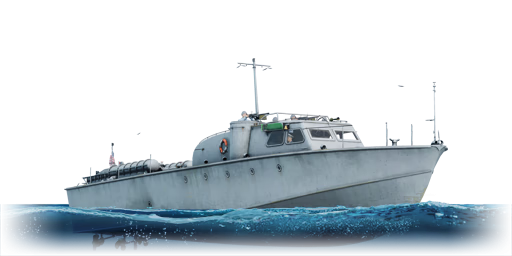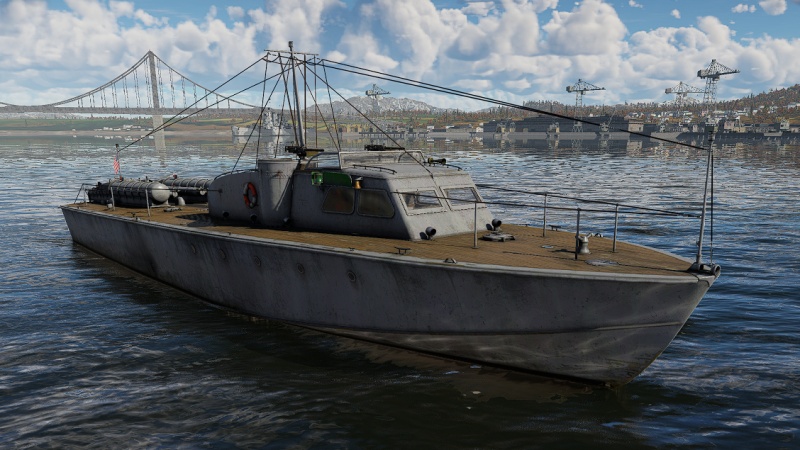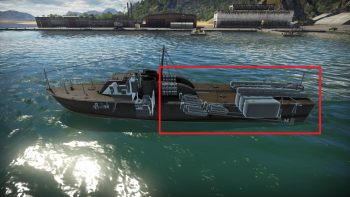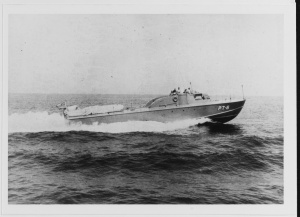Difference between revisions of "PT-6"
Colok76286 (talk | contribs) (Edits) |
(added a whole bunch of stuff) |
||
| Line 15: | Line 15: | ||
<!-- ''Talk about the vehicle's armour. Note the most well-defended and most vulnerable zones, e.g. the ammo magazine. Evaluate the composition of components and assemblies responsible for movement and manoeuvrability. Evaluate the survivability of the primary and secondary armaments separately. Don't forget to mention the size of the crew, which plays an important role in fleet mechanics. Save tips on preserving survivability for the "Usage in battles" section. If necessary, use a graphical template to show the most well-protected or most vulnerable points in the armour.'' --> | <!-- ''Talk about the vehicle's armour. Note the most well-defended and most vulnerable zones, e.g. the ammo magazine. Evaluate the composition of components and assemblies responsible for movement and manoeuvrability. Evaluate the survivability of the primary and secondary armaments separately. Don't forget to mention the size of the crew, which plays an important role in fleet mechanics. Save tips on preserving survivability for the "Usage in battles" section. If necessary, use a graphical template to show the most well-protected or most vulnerable points in the armour.'' --> | ||
| − | The Higgins 81 ft PT-6 has no armour beyond its 40 mm hull and 15 mm superstructure. The | + | The Higgins 81 ft PT-6 has no armour beyond its 40 mm hull and 15 mm superstructure. The side of the boat is most vulnerable as most high penetrating rounds such as the Oerlikon Mk.II 20 mm on the [[80 ft Nasty]] or the 20 mm MG C/30 automatic cannon on the [[R-boot R-41]] will quickly shreds the crew compartments in pieces. The ammunition magazine for the frontal turrets lay directly behind them but are often not worth focusing on to protect. |
[[File:Higgins 81 ft PT-6 Weak Areas.png|350px|thumb|Red box outlines vulnerable areas on the Higgins 81 ft PT-6 and every captain should avoid exposing these segments of the boat to the enemy for extended periods of time.]] | [[File:Higgins 81 ft PT-6 Weak Areas.png|350px|thumb|Red box outlines vulnerable areas on the Higgins 81 ft PT-6 and every captain should avoid exposing these segments of the boat to the enemy for extended periods of time.]] | ||
| Line 39: | Line 39: | ||
{{main|AN-M2 (12.7 mm)}} | {{main|AN-M2 (12.7 mm)}} | ||
| − | The PT-6 has two single M2 Browning machine guns placed on either side of the bridge. This ever-reliable machine guns can effectively deal with any lightly armoured vessel at its BR, thought it lacks firepower to deal damage against larger sub-chaser that is also present | + | The PT-6 has two single AN-M2 Browning machine guns placed on either side of the bridge, with each guns having 400 rounds per magazine and can fire continuously without overheating. |
| + | |||
| + | This ever-reliable machine guns can effectively deal with any lightly armoured vessel at its BR, thought it lacks firepower to deal damage against larger sub-chaser that is also present. The gun has an option to load the infamous APIT belts that is similar in effectiveness with an American late-war belts found on a plane, this belts retain its capabilities of lighting enemy boats on fire and is very good against inbound aircraft. | ||
| + | |||
| + | The Browning is not without downsides, however, as it suffers from a long reload time of 12 seconds (with an ace crew). Due to it being the only guns on the boat, this will leave you vulnerable against any enemy. Thus it is advised to fire it in a controlled burst to maximize damage, and then "dump" the leftover rounds when disengaging to refill the magazine to its full capacity. | ||
=== Additional armament === | === Additional armament === | ||
| Line 51: | Line 55: | ||
== Usage in battles == | == Usage in battles == | ||
| − | + | As an introductory PT boat, the PT-6 has a rather unremarkable characteristics and is not standing out of its peers, save for its slow but powerful torpedoes. | |
| + | Being an early development of the American PT boats, the PT-6 share the common strength and weakness of the more advanced boats further down the line. The boat is quite large and wide compared to its contempolaries but with very poor protection, while also offers overall good mobility and stability. Due to this, the boat is not as good at the others in close-range combat, but performs better at longer range thanks to the accurate Browning MGs. | ||
| + | |||
| + | Due to the vulnerable side profile of the boat, it is advised to went "bow-in" when engaging the enemies, as the boow will help absorb the incoming rounds and reducing the crew loss. As the Browning MGs has long reload time, the boat cannot pursues the enemy for an extended period of time and will be quickly overwhelm by a pack of enemy boats. Always plan an escape route ahead to retreat when you felt the threat is too much for you to handle, then you can "dump" the leftover ammunition to refill it with the full magazines. | ||
| + | |||
| + | The slow but powerful torpedoes of the PT-6 offers an oppotunity to play as an ambusher against slower and larger opponents. You can find some cover or choke points, then delivering the payload when a hit is most certain, then retreat. Or uses the boat's decent manoverability to sail close enough to launch the torpedoes at a point-blank ranges. | ||
=== Pros and cons === | === Pros and cons === | ||
<!-- ''Summarise and briefly evaluate the vehicle in terms of its characteristics and combat effectiveness. Mark its pros and cons in the bulleted list. Try not to use more than 6 points for each of the characteristics. Avoid using categorical definitions such as "bad", "good" and the like - use substitutions with softer forms such as "inadequate" and "effective".'' --> | <!-- ''Summarise and briefly evaluate the vehicle in terms of its characteristics and combat effectiveness. Mark its pros and cons in the bulleted list. Try not to use more than 6 points for each of the characteristics. Avoid using categorical definitions such as "bad", "good" and the like - use substitutions with softer forms such as "inadequate" and "effective".'' --> | ||
| Line 66: | Line 75: | ||
'''Cons:''' | '''Cons:''' | ||
| − | + | * As with all PT boats, its armour is not very good | |
| − | * As with all PT boats, armour is not very good | + | * Long reload time per magazines (12 seconds), leaving the boat nearly defenseless |
| + | * Large profile for its battle rating, rendering the boat vulnerable especially from the sides | ||
* Only two machine guns; makes it hard to engage heavier targets | * Only two machine guns; makes it hard to engage heavier targets | ||
* Slower than the other common PT boats in its BR, such as the LS and G-5 series. | * Slower than the other common PT boats in its BR, such as the LS and G-5 series. | ||
| Line 73: | Line 83: | ||
== History == | == History == | ||
| − | + | [[File:NH 100907.jpeg|300px|thumb|right|The PT-6 (Higgins) during its high speed tests, 1941.]] | |
| + | The PT-6 was an experimental PT boat built by the Higgins Industries in 1939. The boat is not the first one to receive this designation however, as it was originally assigned to the boat designed by the Sparksman and Stevens (S&S) company. Unsatisfied with the original design's shortcomings, Higgins went on to built a redesigned boat which later replaced the S&S design as the offical PT-6. | ||
| + | |||
| + | The PT-6 was originally designed as a sister boat to the PT-5, a PT boat designed by the Sparksman and Stevens company. The two boats were ordered from the Higgins Industries shipyard in Louisiana in 1939. As with the early series PT boats, it was an experimential model built for the United States Navy in a design competition for a standardnized PT boat fleets. The original design utlized the Vimalet engines. However, Andrew Jackson Higgins Sr., head of Higgins Industries Inc., foresaw that the planned engines would have failed to meet the requirements and wanted to redesign the PT-6. His proposal was rejected by the US Navy however, and Higgins have to complete the first PT-6 per the original design. Later, Higgins built a new boat per his own design as a private venture, switching the Vimalet engines with three Packard 4M-2500 engines. The new boat was sent for evaluation in 1940 and proved to have superior performances compared to its predecessor and other competitors, which later caused the US Navy to accept the new Higgins' boat and designated the "PT-6", essentially replacing the original S&S boat. | ||
| + | During 1941, the PT-6 were used for testings to gather more development information for the PT boat program. Later, the boat - along with S&S version - were sent to the United Kingdom, of which the S&S version were then later sent to Finland. The final fate of both boats were unknown, however. | ||
== Media == | == Media == | ||
<!-- ''Excellent additions to the article would be video guides, screenshots from the game, and photos.'' --> | <!-- ''Excellent additions to the article would be video guides, screenshots from the game, and photos.'' --> | ||
| Line 87: | Line 101: | ||
== External links == | == External links == | ||
| − | + | === References === | |
| − | * ' | + | * [http://www.pt103.com/PT_Boat_Manufacturers.html PT103.com's database of the Elco PT boats and other PT boat projects] |
| − | |||
{{ShipManufacturer Higgins}} | {{ShipManufacturer Higgins}} | ||
{{USA boats}} | {{USA boats}} | ||
Revision as of 14:16, 22 October 2022
Contents
Description
The Higgins 81 ft PT-6 is a reserve rank I American motor torpedo boat with a battle rating of 1.0 (AB/RB/SB). It was introduced in Update 1.79 "Project X" as part of the fleet closed beta test.
The PT-6 is the first vehicle of the American coastal tree. It is a basic torpedo boat that can hold its own against other reserve rank boats but lacks the firepower to engage heavy targets.
General info
Survivability and armour
The Higgins 81 ft PT-6 has no armour beyond its 40 mm hull and 15 mm superstructure. The side of the boat is most vulnerable as most high penetrating rounds such as the Oerlikon Mk.II 20 mm on the 80 ft Nasty or the 20 mm MG C/30 automatic cannon on the R-boot R-41 will quickly shreds the crew compartments in pieces. The ammunition magazine for the frontal turrets lay directly behind them but are often not worth focusing on to protect.
The crew positioning is fairly centralized towards the middle-front of the boat. The radio station often lays beneath the water and is directly below the main turrets. The main turrets will often be the last compartment of the boat to be damaged due to their smaller hitboxes. The Higgins has 17 crew members and can continue to survive with a minimum of five if the crew is aced and the Crew Interchangeability stat is maxed out.
Engine compartments lay towards the middle back of the boat beneath the torpedo tubes. Fuel tanks are placed at the back of the Higgins.
Mobility
The mobility of the Higgins 81 ft PT-6 torpedo boat is very good. When all modifications are purchased it has a top speed of 67 km/h in RB (Realistic Battles) and 93 km/h in AB (Arcade battles). As with most torpedo boats, the best use for this craft is to engage heavier vessels with torpedoes. It is recommended for players to use the mobility of the Higgins 81 ft to line up a good torpedo shot at a larger enemy vessel and then break away to safety. Always try to avoid unnecessary risks due to the very vulnerable wood superstructure and hull of the Higgins 81 ft PT-6 torpedo boat.
| Mobility Characteristics | |||
|---|---|---|---|
| Game Mode | Upgrade Status | Maximum Speed (km/h) | |
| Forward | Reverse | ||
| AB | |||
| Upgraded | 93 | 35 | |
| RB/SB | |||
| Upgraded | 67 | 25 | |
Modifications and economy
Armament
Primary armament
The PT-6 has two single AN-M2 Browning machine guns placed on either side of the bridge, with each guns having 400 rounds per magazine and can fire continuously without overheating.
This ever-reliable machine guns can effectively deal with any lightly armoured vessel at its BR, thought it lacks firepower to deal damage against larger sub-chaser that is also present. The gun has an option to load the infamous APIT belts that is similar in effectiveness with an American late-war belts found on a plane, this belts retain its capabilities of lighting enemy boats on fire and is very good against inbound aircraft.
The Browning is not without downsides, however, as it suffers from a long reload time of 12 seconds (with an ace crew). Due to it being the only guns on the boat, this will leave you vulnerable against any enemy. Thus it is advised to fire it in a controlled burst to maximize damage, and then "dump" the leftover rounds when disengaging to refill the magazine to its full capacity.
Additional armament
The PT-6 is loaded with two 533 mm Mk.8-3 C/D torpedoes. They are aimed to fire in the direction of travel. The torpedo must travel a minimum of 50 m in order to arm prior to contact with an enemy vessel. Ironically, despite the PT-6's status as a reserve boat, this torpedo is in fact the second most powerful torpedo the US Navy can offer with 435 kg of TNT equivalent. These torpedoes can sink a destroyer in one hit and can even severely damage enemy cruisers. However, the torpedoes has a poor range of just 3.65 km with a top speed of only 52 km/h, thus limiting the usage of the torpedoes to ambush weapons.
When researched, you can equip 4 Mk.6 depth charges. They are located at the stern of the boat between the torpedo tubes. They are highly situational and quite tricky to use.
Usage in battles
As an introductory PT boat, the PT-6 has a rather unremarkable characteristics and is not standing out of its peers, save for its slow but powerful torpedoes.
Being an early development of the American PT boats, the PT-6 share the common strength and weakness of the more advanced boats further down the line. The boat is quite large and wide compared to its contempolaries but with very poor protection, while also offers overall good mobility and stability. Due to this, the boat is not as good at the others in close-range combat, but performs better at longer range thanks to the accurate Browning MGs.
Due to the vulnerable side profile of the boat, it is advised to went "bow-in" when engaging the enemies, as the boow will help absorb the incoming rounds and reducing the crew loss. As the Browning MGs has long reload time, the boat cannot pursues the enemy for an extended period of time and will be quickly overwhelm by a pack of enemy boats. Always plan an escape route ahead to retreat when you felt the threat is too much for you to handle, then you can "dump" the leftover ammunition to refill it with the full magazines.
The slow but powerful torpedoes of the PT-6 offers an oppotunity to play as an ambusher against slower and larger opponents. You can find some cover or choke points, then delivering the payload when a hit is most certain, then retreat. Or uses the boat's decent manoverability to sail close enough to launch the torpedoes at a point-blank ranges.
Pros and cons
Pros:
- Good armament for a reserve ship
- Vast amounts of ammo for the machine guns
- Good top speed
- Good manoeuvrability
- Extremely powerful torpedoes for its BR, can easily take on destroyer and cruisers
Cons:
- As with all PT boats, its armour is not very good
- Long reload time per magazines (12 seconds), leaving the boat nearly defenseless
- Large profile for its battle rating, rendering the boat vulnerable especially from the sides
- Only two machine guns; makes it hard to engage heavier targets
- Slower than the other common PT boats in its BR, such as the LS and G-5 series.
- Torpedoes are quite slow with short range, restricting it to ambush tactics
History
The PT-6 was an experimental PT boat built by the Higgins Industries in 1939. The boat is not the first one to receive this designation however, as it was originally assigned to the boat designed by the Sparksman and Stevens (S&S) company. Unsatisfied with the original design's shortcomings, Higgins went on to built a redesigned boat which later replaced the S&S design as the offical PT-6.
The PT-6 was originally designed as a sister boat to the PT-5, a PT boat designed by the Sparksman and Stevens company. The two boats were ordered from the Higgins Industries shipyard in Louisiana in 1939. As with the early series PT boats, it was an experimential model built for the United States Navy in a design competition for a standardnized PT boat fleets. The original design utlized the Vimalet engines. However, Andrew Jackson Higgins Sr., head of Higgins Industries Inc., foresaw that the planned engines would have failed to meet the requirements and wanted to redesign the PT-6. His proposal was rejected by the US Navy however, and Higgins have to complete the first PT-6 per the original design. Later, Higgins built a new boat per his own design as a private venture, switching the Vimalet engines with three Packard 4M-2500 engines. The new boat was sent for evaluation in 1940 and proved to have superior performances compared to its predecessor and other competitors, which later caused the US Navy to accept the new Higgins' boat and designated the "PT-6", essentially replacing the original S&S boat.
During 1941, the PT-6 were used for testings to gather more development information for the PT boat program. Later, the boat - along with S&S version - were sent to the United Kingdom, of which the S&S version were then later sent to Finland. The final fate of both boats were unknown, however.
Media
- Skins
See also
Links to articles on the War Thunder Wiki that you think will be useful for the reader, for example:
- reference to the series of the ship;
- links to approximate analogues of other nations and research trees.
External links
References
| Higgins Industries Ships | |
|---|---|
| Patrol Torpedo Boats (PT) | |
| 81' PT Prototype | PT-6 |
| 78' PT | PT-71 · PT-200 · PT-658 · MTB-422* |
| *PT-92 in UK service | |
| USA boats | |
|---|---|
| Motor torpedo boats | PT-3 · PT-6 · PT-20 · PT-71 · PT-103 · PT-109 · PT-174 |
| PT-200 · PT-314 · Thunderbolt (PT-556) · PT-565 · PT-658 · PT-810 · PT-811 · PT-812 | |
| Motor gun boats | Kim Qui · LCS(L)(3) · PT-59 · PTF-7 · USS Candid · USS Asheville · USS Douglas · USS Tucumcari · USS Cyclone |
| Armoured gun boats | LCM(6) Zippo |







